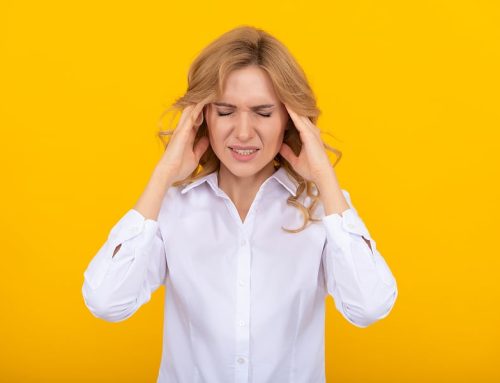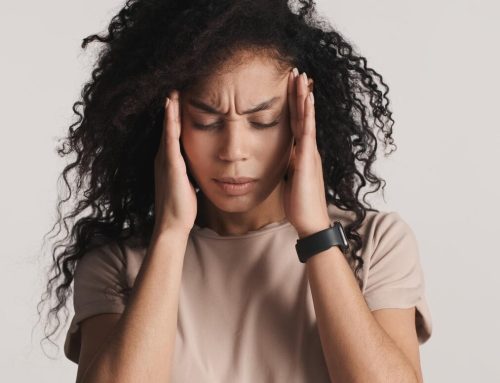At our Sioux Falls migraine chiropractic clinic we have had success in helping our patients find relief from migraines. Most of the primary complaints are about the debilitating headaches a migraine attack brings.
Migraines are more than just unbearable headaches. Some attacks don’t even come with this kind of pain. But they come with several other symptoms that are as disabling as a terrible headache.
If you’re reading this article, we assume you’re one of those who struggles with this painful condition or a loved one of a migraine sufferer. This article should help give you a better understanding of what this condition is and how to deal with it.
Hopefully, after reading this, you will be more capable of recognizing migraine attacks and the better ways to find relief for it in the most natural way possible.
Table of Contents
Migraine Symptoms
Apart from headaches, a migraine attack also comes with other symptoms. Some of them are nausea and vomiting, sensitivity to light, sound and certain smells, and tingling or numbness in the face. Other people even experience symptoms of vertigo, where they feel a spinning sensation.
Such symptoms are disabling to the person who is experiencing them. Many people have to keep themselves bed-ridden once a migraine episode ensues. An episode may last for as short as four hours and as long as three days.
Migraine headaches usually affect one side of the head, but one-third of patients experience it on both sides. Commonly, the pain is either throbbing or pounding.
Some Migraine Facts You Probably Didn’t Know
- Migraines affect a significant number of people. To put it in perspective, around one billion of the world’s population suffer from this disorder. And at least one person in every four US households endures migraine attacks. – Migraine Research Foundation
- While younger people experience migraines, the bulk of the patients are in the 25 to 55 age range. Women are also more susceptible to attacks than men, which they experience three times as often. – Department of Neurology, Albert Einstein College of Medicine
- An average attack happens once or twice a month. However, there are four million people who suffer from chronic migraines, where they experience up to 15 episodes in a month. – Migraine Research Foundation
- Between 25-30%of migraine patients suffer from migraines with aura. It means they also experience visual disturbances, which happen about an hour before the actual attack. – American Migraine Foundation
- Around ten percent of school-age children suffer from migraines. And those who do miss twice as many school days compared to those who don’t. – Migraine Research Foundation
The Five Types of Migraine Attacks
Migraine episodes vary from one patient to another, and around 70 percent aren’t correctly diagnosed. To give you a better idea, here are the six types of migraine attacks.
Migraines without aura
These are the most common migraine attacks, accompanied by the expected headaches, nausea, and sensitivity to light and sound. But they also come with a slew of symptoms that include blurry vision, mood swings, and extreme exhaustion.
Some people even experience episodes of confusion.
These migraine attacks last up to 72 hours and may repeat a few times in a week. They also tend to worsen with the repeated use of pain medication.
Migraines with aura
As mentioned, migraines with aura come with visual disturbances. Other symptoms include temporary loss of vision, flashing or flickering lights, and zigzag lines.
Others experience numbness, muscle weakness, and abnormal sensations on one side of the body. Some may go through episodes of confusion, speaking problems, and loss of appetite.
Migraines with brainstem aura
Formerly known as basilar-type migraines, this form of attack is most common among children and adolescents. As the name suggests, it originates from the brainstem but does not include motor weakness. For teenage girls, these attacks are often connected to their menstrual cycle.
Common symptoms include nausea and vomiting, fever, constipation, and dizziness. At times, there may also be an unexplained pain on another part of the body.
Hemiplegic migraines
Hemiplegic migraines are more severe compared to the other types mentioned above. These attacks cause temporary paralysis, which may last for days.
Other symptoms include a pricking or stabbing sensation, speech and vision problems, trouble swallowing, and vertigo.
Retinal migraines
Retinal migraines are a rarer form of this condition. It does include vision loss, as seen in other migraine types.
The difference with this kind of attack is that the visual disturbance happens in one eye only.
Finding Natural Relief for Migraines
Migraines are neurological issues. One of the reasons seen for these attacks is a possible misalignment of the top two bones of the neck. The misalignment puts unnecessary pressure on the brainstem, causing it to send incorrect signals to the brain.
Misalignments may also cause an improper flow of blood and cerebrospinal fluid. In turn, migraines can develop, especially if the vertebral misalignment is left untreated.
But this can all be corrected through upper cervical chiropractic care if the vertebral misalignment is the cause of the migraines.
Here at Upper Cervical of Sioux Falls, we use gentle and precise methods to fix these misalignments. We stay away from the popping and cracking methods that some chiropractors are known for. Our techniques are tailored to each individual to ensure they receive the proper care they need.
If you’re in search of a Sioux Falls migraine chiropractic clinic, our doors are open for you. For any questions or to schedule a complimentary consultation, call us at (605) 275-6900.
To schedule a complimentary consultation with Dr. Casey Weerheim call our Sioux Falls office at 605-275-6900. You can also click the button below. If you are outside of the local area, you can find an Upper Cervical Doctor near you at www.uppercervicalawareness.com.
If you are outside of the local area, you can find an Upper Cervical Doctor near you at www.uppercervicalawareness.com.






